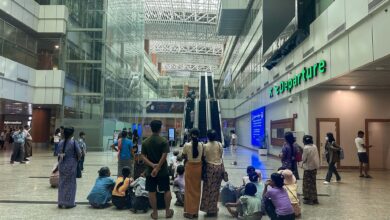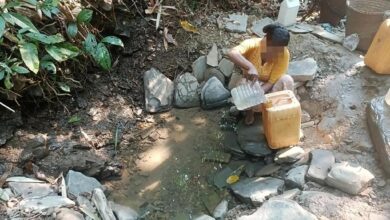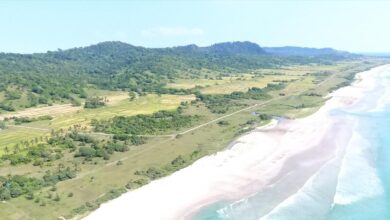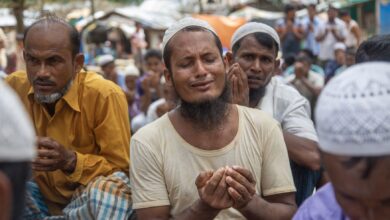
Since seizing power more than two years ago, Myanmar’s military has faced its worst nightmare: fierce resistance to its rule in parts of the country that were once firmly under its control. In response, it has attempted to instil even greater terror in the hearts of its opponents.
Early last year, ahead of the first anniversary of the February 2021 coup, the regime signalled its plans to intensify its brutal anti-insurgency campaigns by appointing a new commander to head its Monywa-based Northwestern Regional Command, which covers Sagaing and Magway regions and Chin State.
The new regional commander was Than Htike, a major general who ushered in new tactics in the junta’s fight to retake resistance strongholds in the Bamar heartland.
In March of last year, he gathered officers under his command together and told them it was time for them to be “more daring” in their efforts to crush the resistance. According to Kaung Thu Win, an army captain who defected in late 2021, Than Htike also warned his subordinates that they would have to “suffer the consequences” if they failed in their mission.
“He’s urging soldiers under his chain of command to be ‘unrelenting’ and ‘decisive.’ That’s why they’re committing more cold-blooded murders since he took over,” said Kaung Thu Win, citing a source who attended that meeting one year ago.
Under Than Htike’s command, regime forces in Sagaing have indeed been unrelenting in their attacks. Village after village has been raided, some of them repeatedly. Many have been razed by fire or come under aerial assault, their inhabitants forced to flee or face certain death. No one has been spared, not even children or the elderly.

A trail of bodies
Despite this, however—and despite his arming of pro-junta Pyu Saw Htee militia groups as part of his all-out war on the resistance—Than Htike has been unable to turn the tide of the conflict more than a year after becoming regional commander.
This has been largely thanks to the continuing support of the public, which remains committed to defying the regime by any means possible. And it is for this reason that, soon after marking the second anniversary of the coup by extending its emergency powers, the junta expanded the number of townships under martial law, bringing the total to 53, including 14 in Sagaing alone, in a bid to squeeze local populations even harder.
For his part, Than Htike has used his expanded powers to green light new levels of savagery by those under his command. In particular, a military column of troops from Light Infantry Division (LID) 99, based in the Mandalay Region city of Meiktila, has been leaving a trail of bodies across southern Sagaing Region since it arrived in Ayadaw Township on February 24.
Dubbed the “Ogre Column,” this unit has committed mass murder in several Sagaing townships over the past month. Bodies have been found in Myinmu Township, where five resistance fighters, all in their teens, were killed and dismembered on February 26; in the Sagaing Township village of Tar Taing, where 17 people, including three women, were slaughtered on March 1; and in Khin-U Township, where a member of a village defence team and another man were captured and killed on March 13.
Since then, even more corpses—most of them belonging to displaced villagers—have been found in villages along the column’s path. While some of the victims killed since last month were members of local defence teams, most were civilians. And in many cases, they were beheaded, disembowelled, or dismembered as a reminder of the lengths that the regime is willing to go to eradicate its enemies.
Stealth attacks
The LID 99 column is just one of several units now operating in Sagaing. Troops from LID 33, which is based in Sagaing, and LID 55, based in Kalaw in Shan State, are also currently active there, as is Operations Command No. 10, based in the northern Sagaing town of Kalay. According to military sources, there are also personnel from a special “anti-terrorist” force based in Pyinmana, in the Naypyitaw Union Territory, now serving under Than Htike.
The sources noted, however, that the military’s command structure has been far less stable since the coup, making it more difficult to know what is happening behind the scenes. And in recent weeks, this has also been increasingly true of the situation on the ground.
Since the latest operations began early last month, junta troops have relied heavily on stealth when mounting their attacks in Sagaing Region. Instead of travelling in trucks or helicopters, they have moved mostly on foot, often through fields or forested areas, in an effort to take their targets by surprise.
“They’re not using vehicles at all now in Salingyi, Kani, Yinmabin and Pale townships. They’re very good at going from village to village undetected,” said an anti-junta activist from Yinmabin.
“People who run into these columns get killed, whether they’re regular civilians or armed resistance fighters,” she added.
According to local resistance sources, three civilians were killed on March 3 when they encountered a junta column marching through Yinmabin—a man from the village of Kyay Sa Kya and a woman and a mentally ill man from another village called Myauk None. There was also evidence that the woman had been raped, the sources added.
‘Kill everyone you see’
Resistance groups in Sagaing have also reported an increase in the number of junta troops in the region, as well as greater coordination among them.
Soon after it was placed under martial law on February 22, Wetlet Township saw a clash involving two junta columns that mounted a joint assault on local anti-regime forces from different directions, forcing them to retreat.
“They both came at us at once, so we couldn’t put up much of a defence. Even if we had managed to defeat one, the other one would have gotten us, so we knew we would just have to get out of there,” said a member of the Wetlet chapter of the People’s Defence Force.

While these tactics have proven effective in battle, however, they have done little to strengthen the regime’s overall position in the region. It remains deeply unpopular, even in areas that were once key recruiting grounds for the military.
“They used to call central Myanmar the ‘bullet-free land,’ and now they’re terrified of the people there,” said Zin Yaw, another former army captain who left the military after the coup.
Stationed in Kachin State until his defection, Zin Yaw also recalled the words of Maj-Gen Nyi Nyi Swe, then head of the Northern Region Command, when speaking to rank-and-file troops during the height of the military’s conflict with the Kachin Independence Army in 2017.
“Kill as many people as possible. Kill everyone you see,” he said, according to Zin Yaw, who added: “Now it seems that [Maj-Gen Than Htike] has given the same order.”
But according to Htet Myat, another captain who left the military after the coup, it is important to remember who is ultimately in charge—namely, junta leader Min Aung Hlaing, who recently travelled to Sagaing to meet with senior members of the Northwestern Regional Command and assess their progress in the region.
“Only people who always carry out each and every order are appointed as regional commanders. So we have to keep in mind that every regional commander is only acting upon Min Aung Hlaing’s will,” he said.



